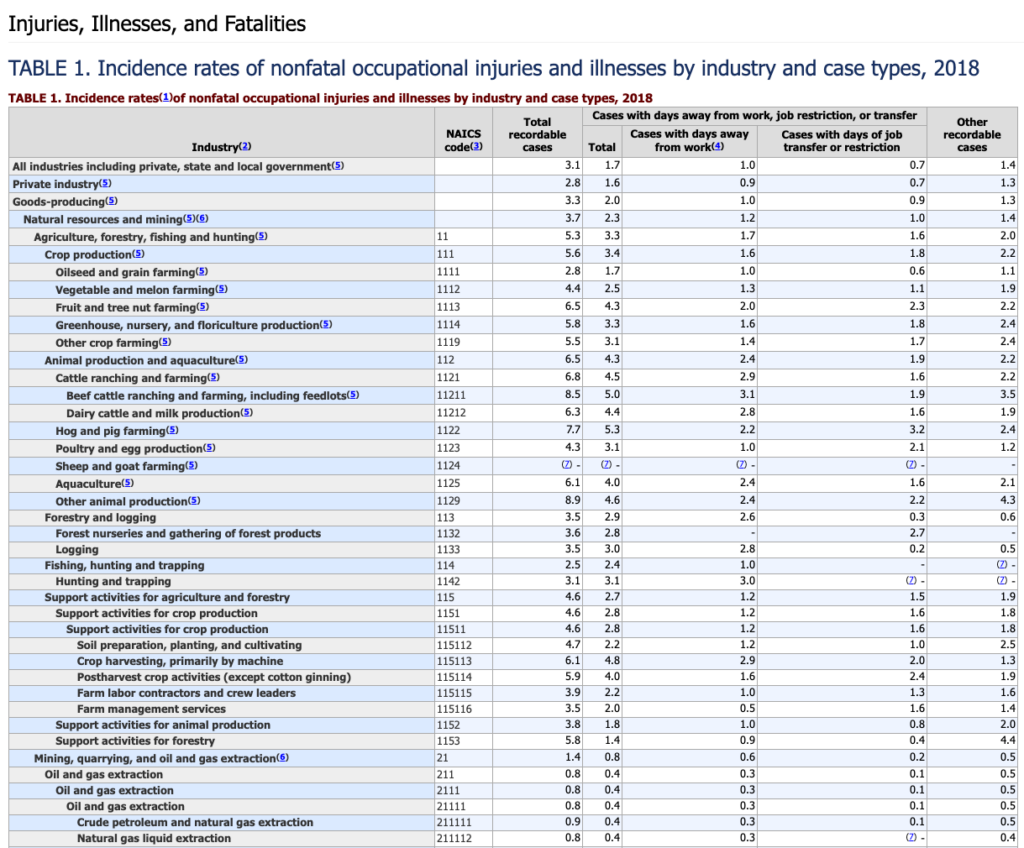If you’re managing a team that is operating in a typically high-risk industry, it is key that you are aware of how your current safety process, as it stands, is impacting your business. Health and safety is a key point of consideration, as the impact of an incident concerns both your company’s overall efficiency and the wellbeing of your workforce, too. Luckily for you, the OSHA DART rate calculator that we’ll share with you ticks both managerial boxes, all with one handy calculation.
In this article, we will cover the basics about what the DART safety metric is and why it is important, followed by an outline of how you can calculate your DART, a handy downloadable calculator and some potential next steps that you can take to reduce your organization’s DART rate.
What is a DART Rate?
DART stands for the days away, restricted or transferred rate. Like TRIR and LTIR, this is a lagging indicator designed to give you insight into your incidence rate, and the level of impact that these incidents have on your operations.
Your DART rate or DART score, in essence, shows you how many workers were injured and how severe the rate of injuries was. You can reveal severity by assessing how many days away from work were taken by 100 workers during one year, as a result of a work-related injury or illness.
Why is DART important?
There are a number of reasons why Health and Safety professionals must keep a close eye on their DART rates.
| Business performance | Keeping track of your DART rate helps you to ensure that your business is performing well against the industry average number of incidents for your line of business. |
| Safety culture | It is an essential part of maintaining a thorough and acceptable level of health and safety throughout your practices. |
| Compliance | In the instance that OSHA finds a poor DART score, especially when it’s on a consistent basis, this can lead to an investigation. Besides, your DART rate must be documented in your OSHA 300 and 300A logs. |
What is a DART incident?
It’s important to note that not all workplace incidents will count against this metric. Since DART covers days that are spent away, restricted or transferred, a DART incident covers any incident where a work-related injury or illness has impacted a worker’s regular work pattern.
This means that DART incident is classed as an injury or illness which has prevented an employee from undertaking their work as they normally would. So, rather than assessing your company’s total injury rate, DART only focuses on incidents that have affected the normal running of your workplace’s operation.

How can I calculate my company’s DART rate?
If you want to know how to calculate your DART rate, it’s actually a remarkably simple bit of mathematics. You can find your OSHA DART rate by measuring the incident numbers that occurred in one single year. Then, multiply the result by 200,000 and divide it by the total number of hours that your workforce contributed.
To calculate your DART score, use the following formula:
(Number of DART Incidents X 200,000) / Total number of hours worked by all employees
The DART rate must be filed in your OSHA 300 and 300A logs. To do this, you will need to calculate the incidence rate (Total Case Rate – TCR), as well. It’s all below in our DART rate calculator.
Download free DART calculator >
DART for small companies
For smaller companies (with a workforce of less than 100), the calculation differs slightly.
This is because OSHA received criticism after it was noticed that a smaller workforce number would cause a disproportionate spike in a company’s DART rate. To take this into account, OSHA have stated that small businesses can use a three-year incident aggregate. This enables them to keep the incident rate at a more stable level and represent it more accurately. Below is an example calculation.
2015 + 2016 + 2017 = 5 injuries x 200,000, divided by 187,200 hours = 5.34%
So, for smaller companies, you combine the incidents across three years. You use both the number of injuries and the number of hours for that time period. Using a three years’ sum rather than that of one calendar year helps balance out the results. This way, you don’t risk inflating your final DART rate number artificially.
In addition, OSHA’s On-Site Consultation Program helps employers with fewer than 250 workers on-site and no more than 500 workers corporate-wide to identify and eliminate or control hazards effectively and economically. You can find more information at: https://www.osha.gov/consultation/
What is a good DART rate?
A good DART score depends on the average for your industry. Some industries, naturally, have higher levels of associated risks. The DART rate takes that into account, as OSHA acknowledges that the expected DART rate for one industry could well be much lower than another, given the practices and the type of work involved in the industry. So, in order to answer what is a “good” DART rate, it all depends on what the average DART rate is for your industry.
| By the way… OSHA actually compares your current DART rate to the industry average to determine if they need to pay you a visit. (Source: The Horton Group, 2019) |
In order to find the average DART rate for your industry, find incident rates specific to your industry through the OSHA website. Then, you can calculate the DART rate for your company, and compare the two readings accordingly.
For example, below you can see an extract from the 2018 industry incidence rates, from the U.S. Bureau of Labor Statistics. You can find the data in full here.

What is the difference between DART and TRIR?
TRIR stands for Total Recordable Incident Rate. While this is another calculation related to workplace injuries, unlike DART, TRIR reflects the total number of work-related injuries, rather than specifically those that have had an impact on your workplace operations.
TRIR is also known as TCIR (Total Case Incident Rate). TCIR/TRIR is used by OSHA to monitor the health and safety standards of typically high-risk industries. Safety managers can also use this measurement to gain a more nuanced understanding of the incidents occurring in the company. Then, they can attempt to resolve high numbers by monitoring the number of incidents in, for example, a particular department.
How can I maintain a low DART rate?
Maintaining a low DART rate is a science as much as it is an art. If you are concerned about your number of DART injuries, there are a number of things you can do. To reduce the number of workdays that are impacted by an illness or injury (and your DART rate), try:
- Providing your workforce with additional training.
- Enforcing regular safety meetings.
- Implementing proactive safety controls. These could be, for example, informative safety posters.
- A strong, thorough risk assessment procedure.
- Putting in place a detailed, careful accident investigation process.
- Encouraging your team to report minor accidents or any near misses that occur.
Key definitions and common FAQs
What classes as “Day Away From Work”?
OSHA classes this as “Restricted work or transfer to another job.”
What does “restricted work” mean?
OSHA defines restricted work to be “Medical treatment beyond first aid.” This may include loss of consciousness, for example. The agency goes further to describe this type of incident as “A significant injury or illness diagnosed by a physician or other licensed healthcare professional.” (Source: OSHA General Recording Criteria)
What is a “routine function”?
A routine function is an activity that an employee performs on a regular basis (a minimum of once a week). A day away necessitates an employee being unable to perform this routine function. If they cannot perform this function, then the days away would need to be recorded.
What classes as “hours worked”?
The DART calculation requires the number of hours worked by all employees over the course of a year. This includes the working hours of all full-time employees, but excludes non-working hours such as holiday time or sick leave.
What is a “job transfer”?
According to the OSHA General recording criteria, 1904.7(b)(4)(ix),
“If you assign an injured or ill employee to a job other than his or her regular job for part of the day, the case involves transfer to another job. Note: This does not include the day on which the injury or illness occurred.”
For example, if a construction worker was injured and is unable to work on site, you may decide to move him or her to the back office to help with paperwork.
Is there a limit to the days away from work you must count?
Yes, OSHA puts a cap of 180 calendar days to this metric. If the injury or illness results in more than 180 days away, days of job transfer, or restriction, you are not required to document this.
Conclusion
Your company’s DART score provides an accurate, clear-cut and quantifiable measurement of whether, in essence, your safety regulations are at a suitable standard.
Your DART score helps to keep you in check, as it provides you with a clear indicator of where your practices are standing. You know conclusively whether you can be satisfied with the current level of health and safety in your company, or whether you need to up your game. As such, the insight that a DART rate calculator provides to your operations cannot be underestimated.
References & Further Reading
The resources below can help you learn a bit more about calculating DART rate. And, there is information on how to go about improving it:
- Establishment Specific Injury & Illness Data (OSHA Data Initiative)
- OSHA incidence rate worksheet
- How To Compute a Firm’s Incidence Rate for Safety Management
- Your Organization’s DART Rate Explained
- Workplace Injury, Illness and Fatality Statistics
- TRIR Calculation & Formula: All You Need To Know
- LTIR Calculation



